Are you tired of sacrificing your love for wine due to painful acid reflux? Well, I have some good news for you! In this article, we will explore the world of wines that are low in acidity and perfect for those who suffer from this common digestive condition.
Say goodbye to heartburn and hello to a delightful glass of vino as we uncover the best least acidic wine options available. So grab your favorite wine glass and get ready to indulge in the ultimate guilt-free pleasure.
Key takeaways
- The main acids in wine are tartaric acid and malic acid
- Acidic wines can trigger acid reflux as well as too much alcohol
- Best red wines for those with acid reflux are Merlot, Grenache and Cabernet Sauvignon
- Best white wines for those with acid reflux are Gewürztraminer, Marsanne and buttery Chardonnay
In case you want to have further explanations on these topics we invite you to read further. If not why not take a look at one of our other posts.
How to Detect Acid in Wine
Detecting acid in wine is an important skill for any enthusiast or sommelier. While some may argue that high acid-ity adds complexity and vibrancy to the wine, others may find it too overpowering. One common method to detect acidity is by observing the tears or legs that form on the side of the glass after swirling. If the tears are slow and clingy, it indicates a higher acid content. On the other hand, fast-moving tears mean lower acidity.

How to detect Acidity in Wine
Another way to determine acidity in wine is through taste. Wines with high acidity typically make your mouth water and can leave a tangy or sour sensation on your palate. However, this characteristic might be more challenging to identify for those who are new to tasting wines. It’s essential to pay attention not only to how the wine feels in your mouth but also how sour taste of it changes throughout different sips and how long it lingers on your palate.

Lastly, understanding the grape variety can provide valuable insights into its naturally occurring acids. For example, Chardonnay grapes tend to have higher acid levels because of malic acid, giving them a crisp taste.
Conversely, Riesling grapes showcase high levels of tartaric acid with flavors ranging from sweet and fruity to bone-dry and acidic publications like Wine Spectator magazine offer comprehensive information about different grape varieties’ natural acid profiles.
Which Wine is Best for Acid Reflux Sufferers?
Acid reflux sufferers often wonder if they can still enjoy a glass of wine without triggering their symptoms. The good news is that there are wines out there that are less likely to cause acid reflux and can be enjoyed by those with sensitive stomachs. When it comes to choosing the best wine for acid reflux, it’s important to consider the acidity levels, alcohol content, and grape variety.

Which type of wines are least acidic?
Low-acid wine like Grenache or Chardonnay can be a safer choice for individuals with acid reflux. These wines tend to have a smoother taste profile due to their lower levels of malic and tartaric acids. Opting for white or rosé instead of red wine might also be beneficial because red wines typically have higher tannin levels that can irritate the stomach lining.
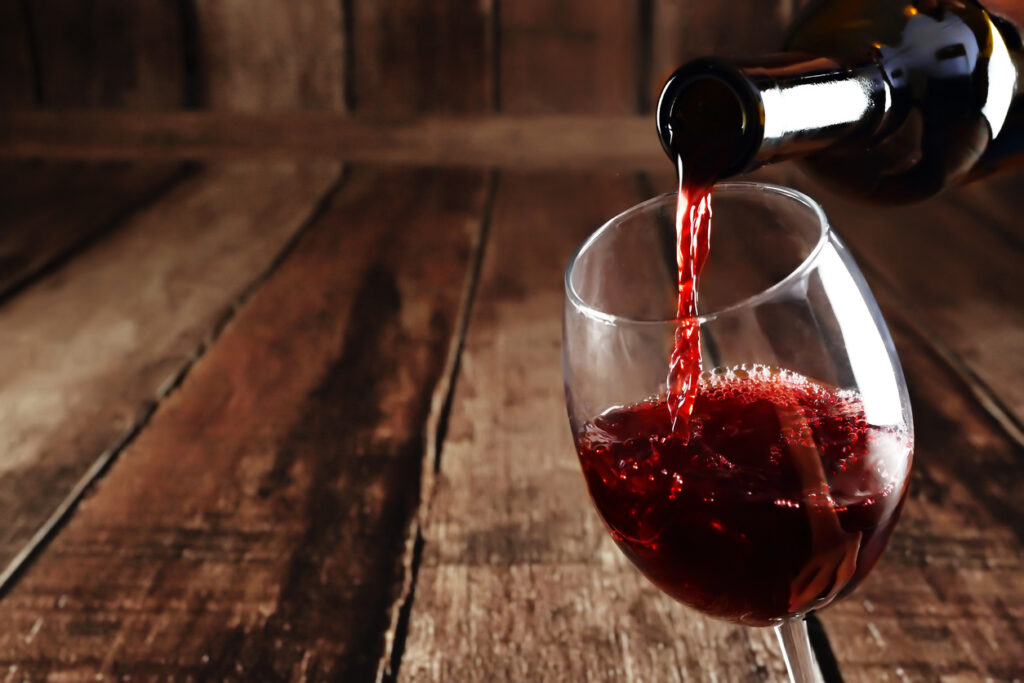
Additionally, paying attention to the alcohol content of white wine and red wine is crucial as alcohol relaxes the lower esophageal sphincter (LES), leading to less acidity and reflux. It’s recommended to choose wines with lower alcohol content, such as those below 13%.
Another factor worth considering is the grape variety used in winemaking. Certain grapes are naturally less acidic than others, making them more suitable for individuals prone to acid reflux. For instance, Riesling is known for its high acidity level.
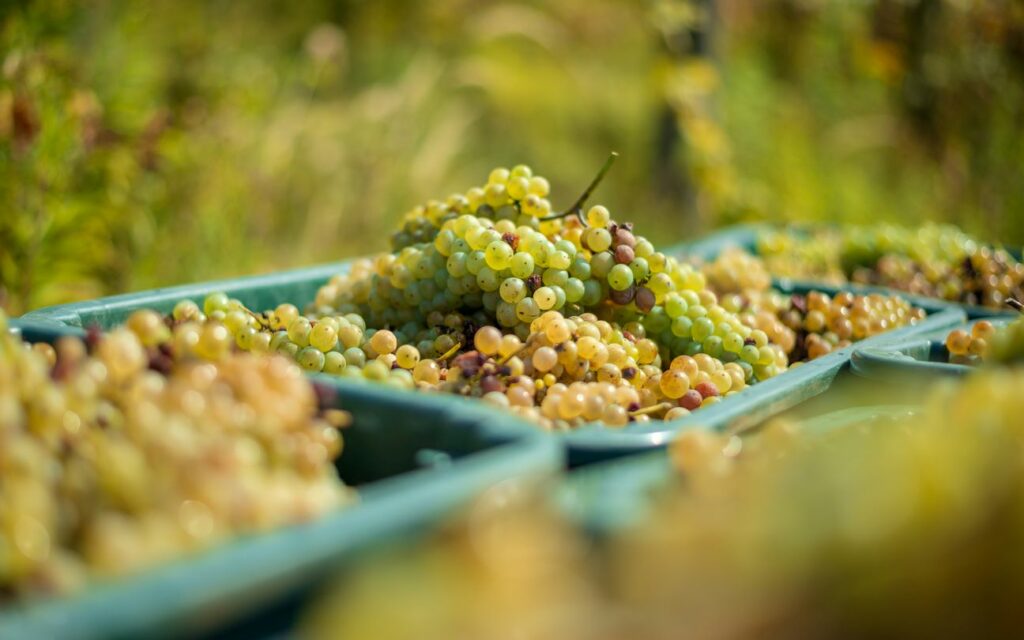
However, many winemakers leave some residual sugar in their Riesling wines counterbalancing the tartness low acid wine and creating a softer mouthfeel that won’t trigger acid reflux symptoms.
Understanding the pH Scale
Understanding the pH scale of wine is essential for any wine enthusiast or sommelier. The pH scale measures the acidity or alkalinity of a substance, with lower values indicating higher acidity and higher values indicating lower acidity. In the case of wine, pH levels can range from about 2.9 to 3.9, with most wines falling around 3-3.6 on the scale.
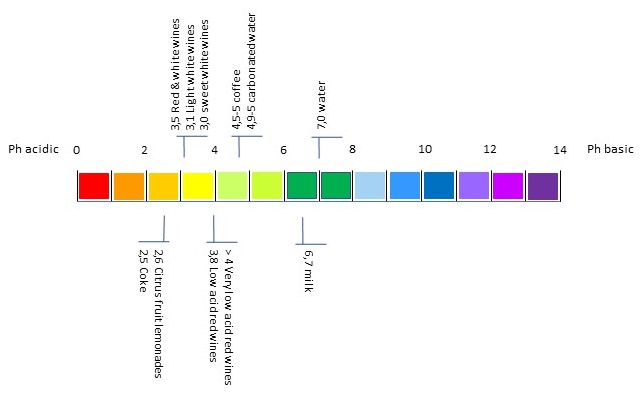
Why is Acid Important in Wine?
Acidity plays a crucial role in determining a wine’s taste and overall quality. Wines with high acidity are often described as crisp, lively, and refreshing, while low-acid wines can taste flat or dull. Interestingly, sugar also affects a wine’s perceived acidity; sweeter wines may taste less acidic than they actually are due to this balance between sweetness and enough acidity.

The importance of understanding the pH scale lies in its impact on winemaking decisions. Winemakers carefully monitor and control pH levels throughout the fermentation process to ensure optimal flavor development and stability in their wines. By manipulating pH levels through techniques like deacidification or acidification, winemakers can shape the characteristics of their final product – from creating vibrant, zesty whites to producing rich, aged reds.
With this knowledge of how pH interacts with acidity and sugar content, wine lovers can appreciate how these factors work together to create different tastes and sensations in every glass they savor – an exciting aspect that adds depth to their appreciation for fine wines across various regions and grape varietals
Types of Acids in Wine
When it comes to wine, acids play a crucial role in determining the overall character and taste profile. Perhaps the most prevalent acid found in white wines tend to is tartaric acid. This organic compound contributes to the crispness and freshness of the wine, providing a mouth-watering acidity that enhances flavors. Wines high in tartaric acid are often described as lively and zesty, making them an excellent choice for those seeking a vibrant dining experience.
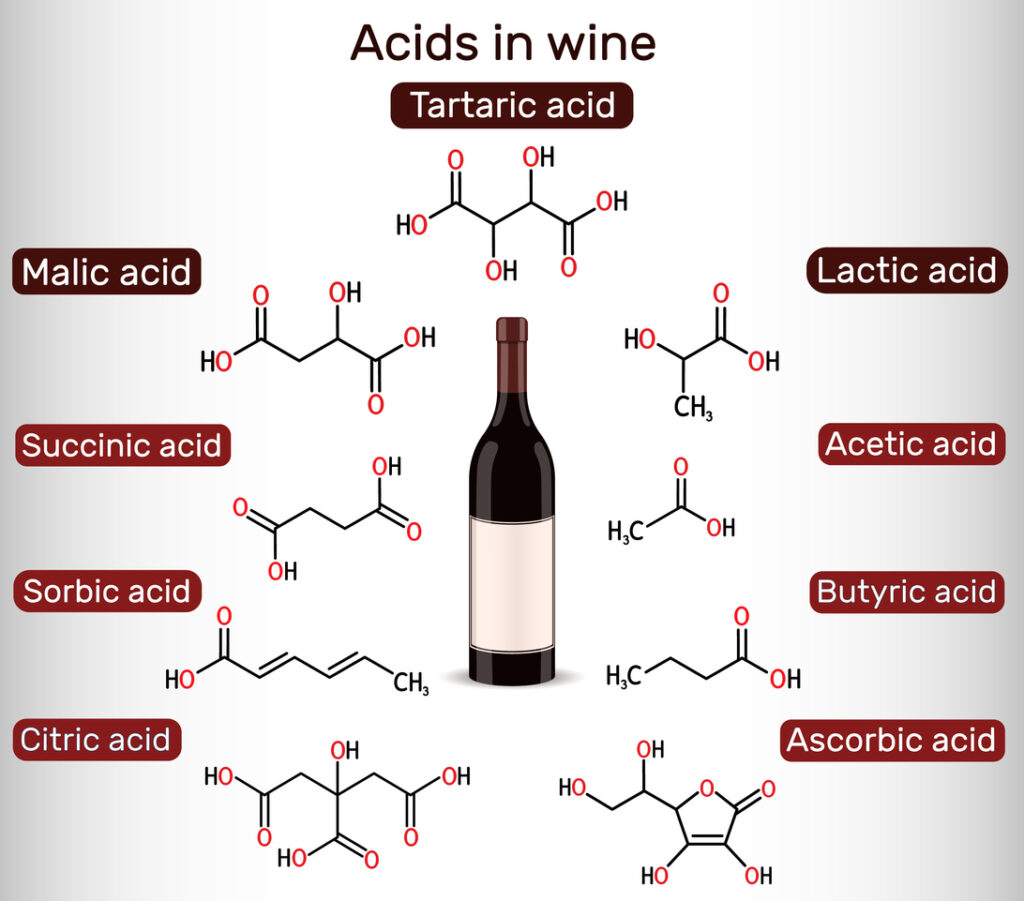
Another prominent acid found in wine is malic acid. Commonly associated with green apples, this acid brings a pleasant tartness to certain white wines. It helps balance out the sweetness and imparts a refreshing quality that can elevate your tasting experience.
Malic acid is also present in some red wines but at lower levels, contributing more subtly to their complexity and structure.

While these two acids are widely recognized among enophiles, there are several other types worth exploring and appreciating. For instance, citric acid isn’t commonly found in grapes themselves but can be present in small amounts due to winemaking practices or when blending with citrus fruits during fermentation. This citric touch adds brightness and tanginess that pair brilliantly with seafood dishes or summer salads.
Do Tannins Make Wine More Acidic?
Tannins are a crucial component in wine, known for their ability to affect its taste, structure, and aging potential. However, one common misconception is that tannins make a wine taste more acidic. In reality, tannins and acidity are two distinct characteristics of a wine that can interact to create different flavor profiles.

Acidity refers to the tartness or sharpness perceived on your palate when tasting wine. It is primarily influenced by the levels of organic acids present in the grapes during fermentation. Tannins, on the other hand, are naturally occurring compounds found in grape skins, seeds, and stems that add bitterness and astringency to the wine’s profile. Red wine contains more tannins than white wine because the grape juice remains in contact with the skins and seeds for a longer time during fermentation.

While both acidity and tannins contribute to a wine’s overall balance and structure, they do not directly influence each other or drink wine’s intensity. A high-tannin red wine may have low acidity or vice versa. The perception of a balanced and harmonious wine arises when these elements work synergistically rather than overpowering one another.
Wine and GERD
Wine is often seen as a symbol of relaxation and enjoyment, but for those who suffer from gastroesophageal reflux disease (GERD), it can be a potential trigger for symptoms. GERD occurs when stomach acid flows back into the esophagus, causing heartburn, chest pain, and other uncomfortable symptoms.
While everyone’s triggers can vary, wine is known to stimulate the production of stomach acid. It also relaxes the muscles that keep it in the stomach. This combination is what can lead to acid reflux and flare-ups.
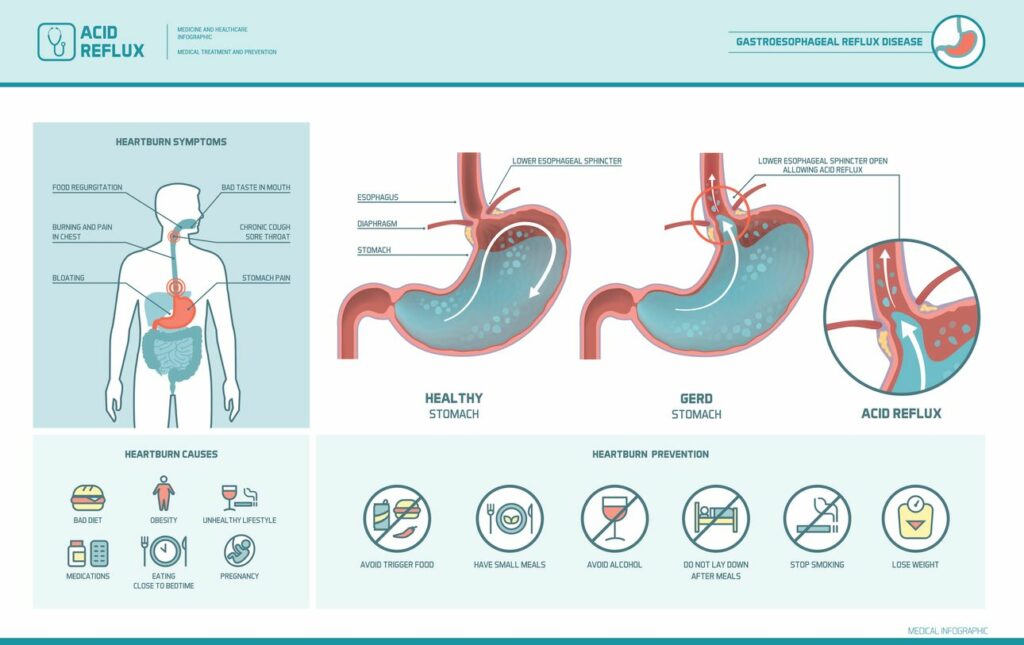
However, that doesn’t mean all hope is lost for wine lovers with GERD. The key lies in making smarter choices when it comes to wine selection and consumption habits. Opting for white wines with lower acidity levels like Chardonnay or Marsanne might be better tolerated than reds or sparkling varieties. Additionally, choosing wines that have been aged longer can help reduce their acidity levels as well.
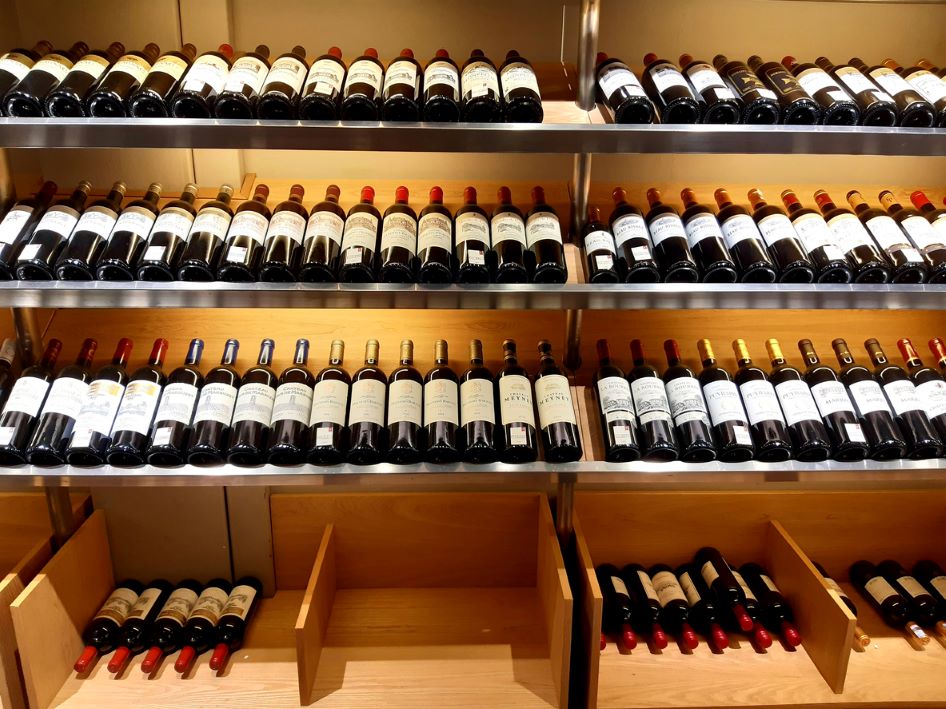
It’s important to note that moderation is also crucial in managing GERD symptoms while enjoying wine. When drinking wine too much alcohol can exacerbate acid reflux symptoms. It irritates the lining of the esophagus and weakening the lower esophageal sphincter. It’s recommended to limit consumption to one glass per sitting and avoid ever drinking wine on an empty stomach.

Ultimately, finding a balance between indulgence and comfort is key when dealing with GERD and wine cravings. Experimenting with different types of wines while monitoring individual reactions is essential in determining which ones are best suited for personal tolerance levels.
Food and Wine Pairings to Balance Acidity
When it comes to balancing acidity in food and wine pairings, it’s all about finding the right flavors to complement each other. One approach to achieving this balance is by pairing acidic foods with wines that have a lower acidity level.

For example, if you’re serving a dish with a tangy tomato sauce, opt for a red wine like Merlot or Pinot Noir. These wines will have enough structure and depth to stand up against the acidity of the sauce without overwhelming your taste buds.
Another technique for balancing acidity is by adding richness and creaminess to your food pairing. Cream-based sauces or dishes that incorporate butter or cheese can help mellow out the sharpness of acidic ingredients.

In terms of wine, look for options with a touch of sweetness like Riesling or Gewürztraminer. The combination of sweet and creamy flavors will create a harmonious balance on your palate.
Overall, finding the perfect balance between acidity in food and wine pairings requires careful consideration of flavor profiles and complementary elements. Choose wines with lower acidity levels or opting for sweeter options when dealing with highly acidic foods. This way you can create a delightful dining experience. The right combinations can bring out the best in both your meal and your glass of wine.
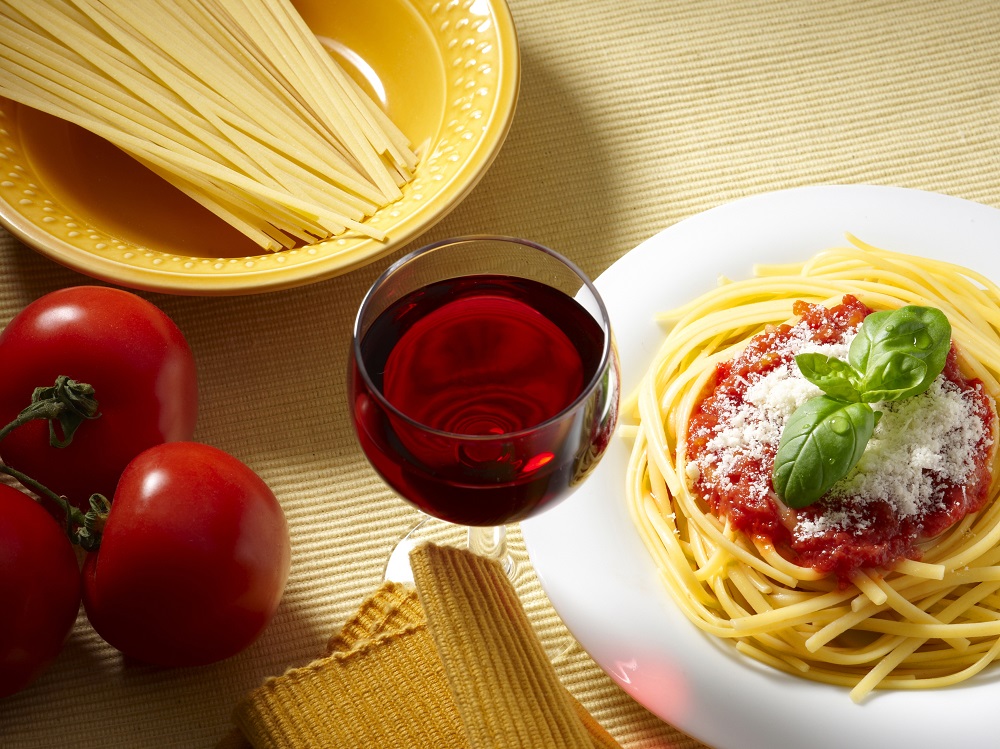
Best least acidic wine for those with acid reflux
When it comes to finding the best least acidic wine for those with acid reflux, several options stand out.
Grenache
One such option is Grenache, a red wine known for its low acidity and smooth flavor profile. With its ripe berry and spice notes, Grenache provides a delightful drinking experience without triggering acid reflux symptoms.

Chardonnay
For white wine enthusiasts who suffer from acid reflux, Chardonnay is a great choice. This full-bodied yet low-acid varietal offers buttery flavors and hints of tropical fruit that are gentle on the stomach. Its lower acidity levels make it less likely to cause discomfort or heartburn.
Malolactic fermentation which is used in the vinifivcation of some Chardonnay wines reduces the content of malic acid in favour of lactic acid.

Merlot
Another noteworthy option for individuals with acid reflux is Merlot. This red wine has softer tannins and lower acidity compared to other red varieties like Cabernet Sauvignon or Shiraz. Merlot‘s velvety texture and plum-like flavors provide a soothing sensation while minimizing the risk of acid reflux flare-ups.
A highly rated Merlot which fullfills these criteria is Smith Devereux Ibex Single Vineyard Merlot.

Marsanne
This is a white wine that offers a smooth and creamy texture with flavors of pear, honeysuckle, and almond. This varietal is known for its lower acidity levels compared to other white wines. This makes it easier on the stomach for individuals who suffer from acid reflux. Chapoutier Ermitage Le Méal Blanc is among the most expensive wines made from this grape.
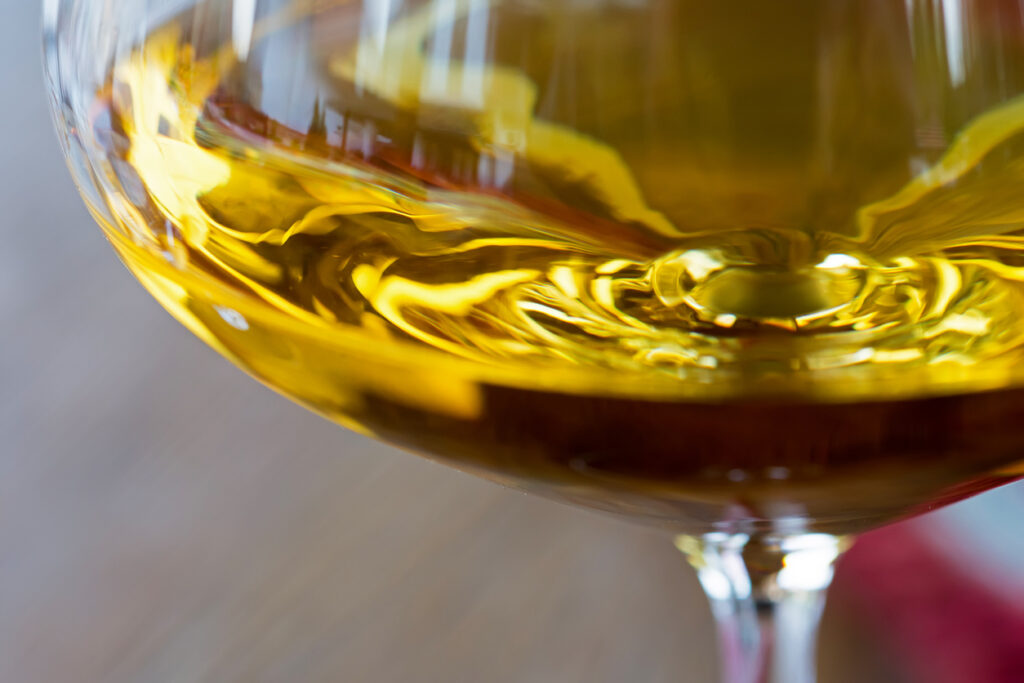
Cabernet Sauvignon
On the other hand, if you prefer red wine, Cabernet Sauvignon might be your best choice. It is known for its bold flavors of black currant, cassis, and tobacco leaves. Cabernet Sauvignon has moderate acidity levels which may alleviate symptoms of acid reflux. Additionally, This red wine contains higher amounts of tannins compared to other red wines. These are believed to have anti-inflammatory properties that can benefit those suffering from acid reflux.
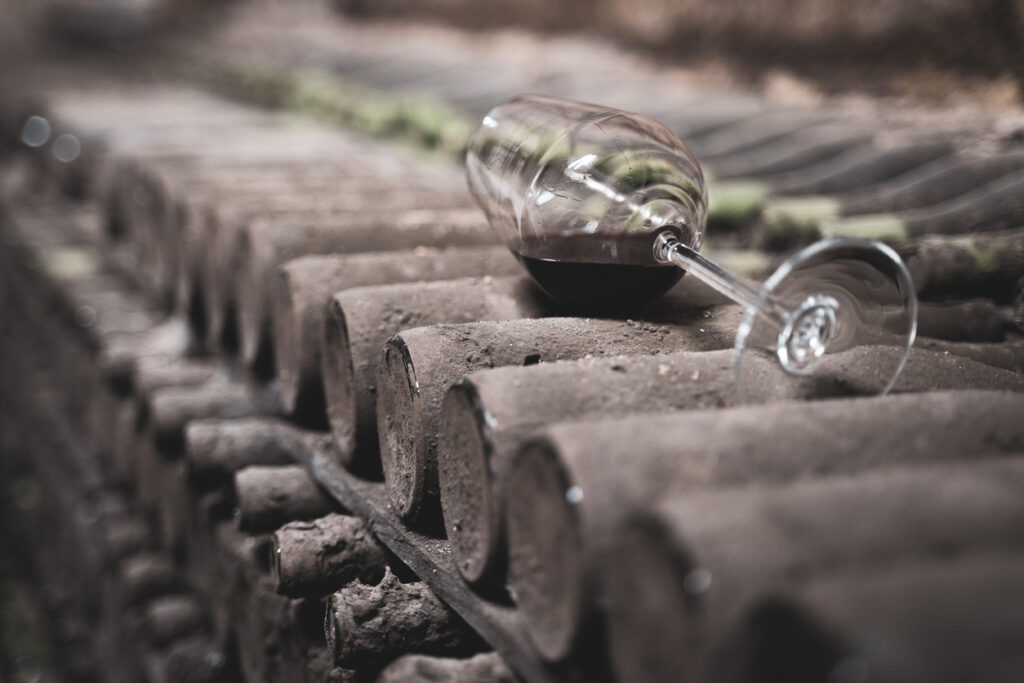
Conclusion
Finding the right wine if you have acid reflux can be a daunting task. It doesn’t mean you have to give up your favorite drink. Grenache, Cabernet Sauvignon, Chardonnay and Marsanne are all excellent options that can allow you to enjoy wine without triggering your symptoms. Each of these wines has unique qualities that make them less acidic and more palatable for those with reflux. Remember to always moderate your consumption and keep track of what works best for your body. So why not venture out today and explore these options, perhaps one of these wines could become your new go-to drink!

